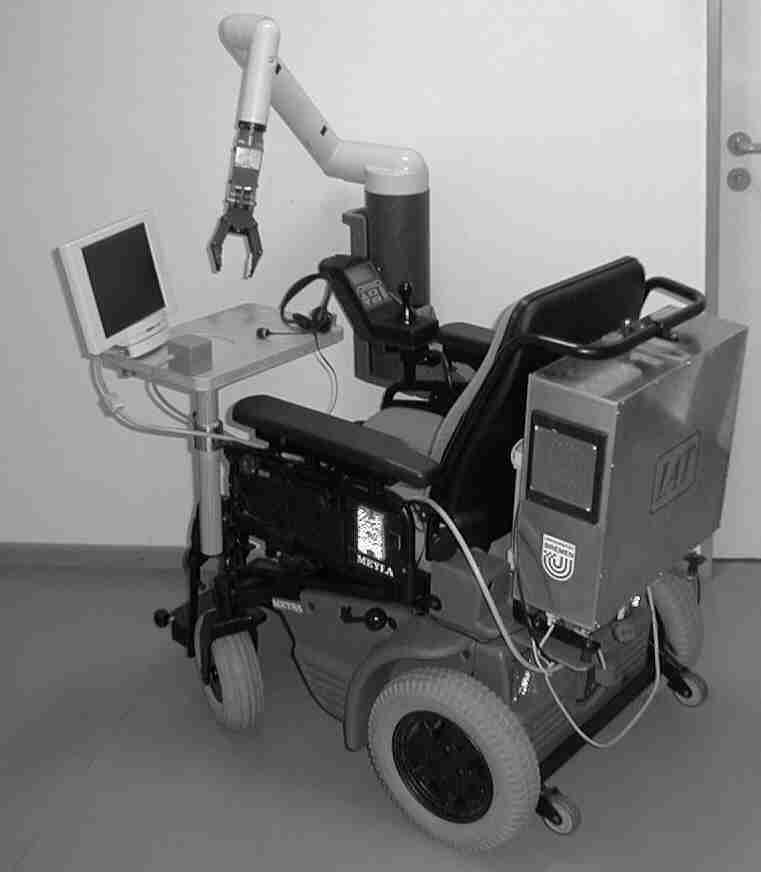| The Future
The future of assistive
robotics is extremely bright. Researchers continue to enhance the
robotic capabilities of wheelchairs and other devices continuing
to make them more and more autonomous. We see the following developments
in the world of robotic wheelchairs in the future.
- The combination of autonomous technology with the driving power
and maneuverability of wheelchairs such as Dean Kamen's IBot.
This will allow users of autonomous wheelchairs a greater range
of freedom. Currently if a user of a semiautonomous wheelchair
issues a command such as "go forward" the wheelchair
cannot handle terrain such as stairs and will simply stop. In
the future the wheelchair would detect the stairs without the
users intervention and autonomously go into stair climbing mode
and exit the mode at the end of the stairs.
- The integration of better navigation and mapping routines. This
will allow the wheelchair to navigate obstacles and to choose
the best routes to locations without the intervention of the user.
Future wheelchairs will be able to follow much more higher level
commands than today's wheelchairs. Today's wheelchairs can only
follow simplistic commands such as "go forward". Tomorrows
wheelchairs will be able to handle commands such as "Take
me to the kitchen" or even "Take me to work." and
be able to auto-navigate to the location, crossing a variety of
terrains and avoiding obstacles along the way without intervention
from the user.
- The integration of other robotic technology such as grasping
arms
. This is already underway in a variety of research labs but the
technology is in its infancy and not fully autonomous yet. For
example FRIEND (Functional Robot Arm with User Friendly Interface
for Disabled People) is a wheelchair with a robotic arm capable
of being voice controlled [4].
The robot is an amazing device capable of many tasks, from pouring
a glass of water to opening a door. Future robotic wheelchairs
will combine this technology with the above technologies to create
a wheelchair which you could issue the command "Get me a
glass of water." The wheelchair would then evaluate the command
and decide the best course of action to carry the plan out. The
wheelchair would decide the closest source of water (i.e. am I
nearer to the kitchen or the bathroom), the best route to get
there and take the user there and automatically get them a glass
of water.
- The integration of control technologies into autonomous wheelchairs.
Currently most users communicate to their wheelchair via hand
signals (i.e. a joystick) or voice commands. In the future robotic
wheelchairs will be able to take their commands via a variety
of sources such as breath control, eye movement control or muscle
twitch control. There are chairs that incorporate these control
types in use today but they are not robotic in nature. A brian
based neuron control for robots and other devices is in development
by a corporation called Cyberkinetics [http://www.cyberkineticsinc.com/]
which promises to free a user from physical control of a robot.
|


